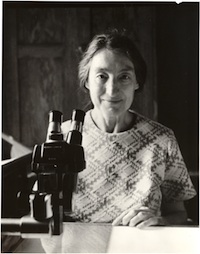I am currently checking the data on about 500 long period variables - Miras and semiregulars - for a project spearheaded by Matthew Templeton. Many of these stars average more than 30,000 observations in the AAVSO International Database and cover an interval of approximately 90-170 years.

As I go through the data on star after star after star, I am always impressed and sometimes overwhelmed by the awe-inspiring dedication of the thousands of observers 'keeping the faith' with these stars through their observations.
I look at a beautiful cycle of data from 1853 - nearly 160 years ago: before the American Civil War, more than 20 years before the telephone was invented, before the Transcontinental Railroad was completed, before the creation of the nation of Italy, during the Crimean War! The most recent observation of this same star was submitted on November 10, 2011.

Yes, there are gaps in the earliest years, but the torch is picked up by the next generation and passed from generation to generation to generation, down to today. The observer in 2011 is directly connected to that observer in 1853 - a road extending back in time one observer and one observation at a time, constructed through determination and love for the work.
When we look at the stars we are looking back in time. When we look at a light curve we are looking back not only at the timeline of stellar variation but also the human timeline - a strong chain forged one observer at a time, carrying the torch, building the road.
Dorrit Hoffleit said, "Work for the work's sake and it will become part of you." How right she was!
-- Elizabeth Waagen
P.S. More and more of the earliest datasets in the AAVSO International Database are there thanks to the efforts of our terrific digitization volunteers, who are working in coordination with or under the supervision of Matthew Templeton to digitize published or unpublished sets of observations. Grateful thanks to everyone involved!

